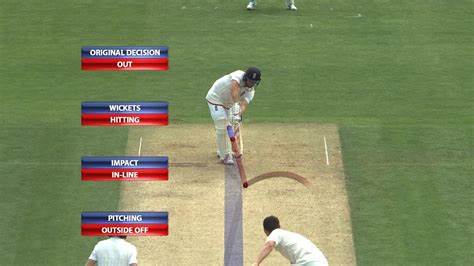In recent years, technology has revolutionized the game of cricket, transforming the way matches are played, analyzed, and experienced by fans around the world. From the introduction of innovations like Hawk-Eye and Snickometer to the use of Decision Review System (DRS), technology has had a profound impact on various aspects of the sport. In this Reddy Anna Report, we delve deeper into the influence of technology on cricket and its implications for players, officials, and spectators alike.
- Hawk-Eye and Ball Tracking Technology: One of the most significant technological advancements in cricket is Hawk-Eye, a ball-tracking system that provides real-time analysis of deliveries, including trajectory, bounce, and spin. This technology has revolutionized the way umpires make decisions on LBW (Leg Before Wicket) appeals by providing accurate predictions of where the ball would have gone had it not hit the batsman’s pad. Reddy Anna recognizes the importance of Hawk-Eye in enhancing the accuracy of umpiring decisions and reducing contentious on-field disputes.
- Decision Review System (DRS): The Decision Review System (DRS) has become an integral part of modern cricket, allowing players to challenge on-field decisions made by the umpires. Utilizing technology such as ball-tracking and Snickometer, DRS provides teams with the opportunity to review contentious decisions related to dismissals, boundary calls, and LBW appeals. While DRS has been praised for its role in improving the accuracy of umpiring decisions, it has also sparked debates regarding its consistency and impact on the flow of the game. Reddy Anna acknowledges the mixed opinions surrounding DRS but acknowledges its overall positive impact on the game.
- UltraEdge and Snickometer: UltraEdge and Snickometer are technologies used to detect faint edges off the bat during close catching and LBW decisions. UltraEdge uses audio sensors to detect the sound of the ball brushing against the bat, while Snickometer measures the deviation in sound waves caused by contact between the ball and the bat. These technologies have proven invaluable in resolving contentious decisions and providing conclusive evidence to support umpires’ calls. Reddy Anna appreciates the role of UltraEdge and Snickometer in ensuring fair play and upholding the integrity of the game.
- Player Performance Analysis: Beyond officiating, technology has also revolutionized the way players analyze and improve their performance on the field. Advanced data analytics tools provide players and coaches with insights into batting, bowling, and fielding metrics, allowing them to identify strengths, weaknesses, and areas for improvement. From tracking run rates and scoring patterns to analyzing ball-by-ball data, technology enables players to make data-driven decisions and optimize their strategies accordingly. Reddy Anna acknowledges the importance of data analytics in enhancing player performance and fostering continuous improvement.
In conclusion, the impact of technology on cricket cannot be overstated. From enhancing the accuracy of umpiring decisions to empowering players with valuable insights into their performance, technology has reshaped the way the game is played and experienced. As cricket continues to embrace technological innovations, it is essential to strike a balance between leveraging technology for the benefit of the sport while preserving its traditional values and spirit. Reddy Anna Report recognizes the transformative power of technology in cricket and its role in shaping the future of the game.
